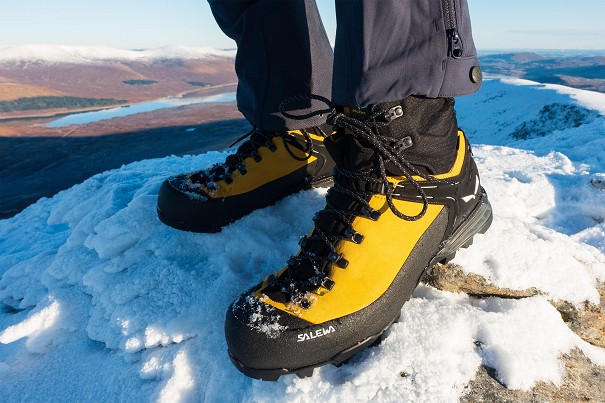Whether you’re summiting your first snow-covered peak with a professional guide, as part of a mountaineering class, or with experienced friends, you’ll need a reliable pair of boots. Here’s how to choose the right mountaineering boots for your adventure:
Before You Shop
Answer these key questions to guide your purchase:
- Should you rent or buy mountaineering boots?
- Renting: Ideal for a one-time trip, as it’s more cost-effective. Many guide services and REI Co-op stores offer rentals.
- Buying: Best if you have multiple mountaineering trips or classes planned over the summer.
- Do you have specific requirements from your guide, instructor, or friends?
- Consider if they recommend plastic boots or insulated leather/synthetic boots. Plastic boots are common in rentals due to their sturdiness, warmth, and minimal break-in period.
- Will you use your mountaineering boots for hiking as well?
- For dual use, opt for lightweight, non-insulated boots. However, specialized mountaineering boots are recommended for summiting snowy peaks, with separate hiking boots for other activities.
- Which should you buy first, crampons or boots?
- Start with the boots to ensure a good fit. Then find compatible crampons. Some rugged hiking boots can also work with crampons for limited snow or ice travel.
- Does the boot fit well?
- Fit is crucial. You’ll be wearing these boots for long hours with heavy loads. Visit an outdoor specialty shop for a precise fitting.
Basic Types of Mountaineering Boots
- Insulated Boots
- Construction: Multilayered without inner and outer boots.
- Comfort: Super-comfortable once broken in.
- Waterproofing: Durable water repellent (DWR) finish, needs periodic renewal.
- Material: Rugged leather or synthetic, resists abrasion.
- Warmth: Moderately warm, some models have insulated inner boots.
- Weight: Lighter than plastic boots, suitable for long hikes.
- Cost: More expensive, around $450 and up.
- Three-Season Boots
-
- Construction: Lightweight, no insulating layer.
- Comfort: Super-comfortable once broken in.
- Flexibility: Suitable for hiking and scrambling.
- Waterproofing: DWR finish, needs periodic renewal.
- Material: Rugged leather or synthetic, resists abrasion.
- Temperature: Won’t overheat in warm conditions.
- Cost: Moderately priced, typically less than $400.
- Plastic Boots
- Construction: Hard-shell plastic with a soft inner boot.
- Availability: Common in rental shops due to durability.
- Durability: Shell withstands ice and abrasion.
- Waterproofing: Shell repels slushy snow.
- Warmth: Suitable for cold conditions.
- Comfort: Moderately comfortable, no break-in required.
- Cost: Moderately priced.
- Usage: Heavy, not suitable for long approach hikes.
For most, the choice is between three-season (non-insulated) and insulated boots. If you prefer a lighter, more affordable option, go for three-season boots. If you need warmth for various conditions, insulated boots are ideal.
After You Buy
- Add Insoles for Better Support
- Enhance comfort and performance with supportive insoles. For guidance, read “How to Choose Insoles.”
- Break in Your Mountaineering Boots
- Avoid wearing new boots on summit day. Break them in by wearing them as much as possible before your trip. Day hikes can help. For more tips, read “How to Break in Hiking Boots.”
- Clean and Maintain Your Boots
- Cleaning: Dirt and grit can degrade your boots. Use a soft nylon brush and boot-cleaning products.
- Waterproofing: Renew the DWR finish when water stops beading on the surface.
Choosing the right mountaineering boots ensures comfort and safety as you embark on your snow-covered peak adventure.




